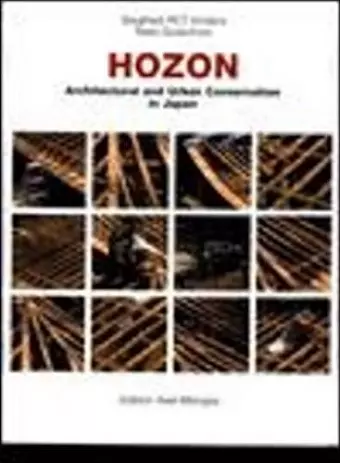Hozon
Architectual and Urban Conservation in Japan
Niels Gutschow editor Siegfried Enders editor
Format:Hardback
Publisher:Edition Axel Menges
Published:20th Aug '02
Currently unavailable, and unfortunately no date known when it will be back

Text in English, German and Japanese. The architecture of Japan, both historic and contemporary, has attracted architects from all over the world since the early 60s. In search of the 'Japaneseness' of place (ma), space and architecture several dissertations have been written, especially about the Japanese house and rituals, Conservation, however, was largely neglected. Only recently, with the listing of Japanese sites as Unesco World Heritage in 1994 and the Nara conference on authenticity in 1995, has the Japanese approach to conservation emerged as an intriguing issue. The practice of dismantling and reconstructing complex timber structures represents an essentially Japanese approach. Moreover, the refined documentation and structural research prior to any intervention are much admired by the international conservation community. The articles for this publication were prepared in the context of a Japanese-German co-operative programme in architectural and urban conservation in 1996-98. For the first time ever a Western publication attempts to portray the Japanese practice of repair -- hozon -- of historic structures. Detailed photographic documentations demonstrate the beauty of timber structures that are otherwise concealed by roofs and walls. It also becomes evident that an architectural object is not an entity that is defined once and for all, but an object that allows for change. Documentations of ongoing projects, with emphasis on the Fudo-do on the sacred mountain of Koyasan, explain and justify various kinds of interventions that are aimed at structural reinforcement and disaster prevention.
ISBN: 9783930698981
Dimensions: unknown
Weight: 1207g
208 pages